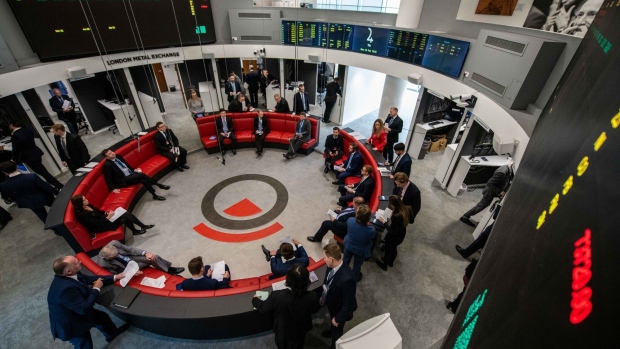May 31, 2023
LME Plans Changes That Would Make Contracts More Algo-Friendly
, Bloomberg News

(Bloomberg) -- The London Metal Exchange is planning to make its process of setting end-of-day prices more predictable, a move that could favor algorithmic traders over more traditional brokers.
The exchange on Wednesday announced long-awaited changes to its closing price methodology, saying it would expand the use of volume-weighted averages to set prices for its five main contracts. The move is still subject to feedback from its members.
The method for determining prices is a fraught issue at the LME, which has been gradually adopting modern trading technology alongside its iconic 146-year-old open outcry trading floor, known as “the Ring.” The exchange is also facing unprecedented regulatory scrutiny, with the Financial Conduct Authority launching an enforcement investigation into it over the short squeeze that hit its nickel market last year.
The Ring was closed in 2020 because of the coronavirus pandemic, forcing the LME to set its benchmark prices electronically. The exchange initially proposed to make the closure permanent, but it backed down after members revolted. When the floor was reopened in 2021, the exchange maintained the practice of setting closing prices electronically and said it planned to refine its methodology.
The resulting discussion has been controversial. In its announcement on Wednesday, the LME noted that a working group of market participants set up in 2021 to discuss the issue was sharply divided, with some participants “strongly opposed” to the expanded use of volume-weighted average prices, while others were “strongly in favor of such a methodology.”
The move could end up favoring big banks and arbitrage traders over more traditional brokers. Many market participants seek to trade at the closing price, whatever it may be, and a shift from using the last traded price to a volume-weighted average would give an advantage to more technologically-sophisticated brokers who can develop algorithms to predict the closing price.
The LME noted that concern, but said it believed that its proposal offered “an appropriate balance.”
An analysis published by the LME showed that, had the measure been in place over the past nine months, the change in methodology would in the vast majority of cases have resulted in a change in closing prices of less than $1 a ton. But on some occasions, the change would have meant a difference of as much as $22 a ton.
The exchange also announced several other measures on Wednesday that had been previously flagged in its “action plan” in response to the nickel crisis.
One proposed change would compel warehouses to report all stock stored in LME-registered warehouses that is “eligible” for delivery against the exchange’s contracts, even if the owner doesn’t intend to do so. Another would make permanent the LME’s existing measures to limit pricing impacts while inventory levels are low, by allowing traders with short positions to defer delivery for a fixed cost.
Matthew Chamberlain, the LME’s chief executive, said the proposals were “designed to ensure the long-term health and efficiency of LME markets and to support the trading community in building deep, resilient liquidity for the benefit of all our users.”
©2023 Bloomberg L.P.






